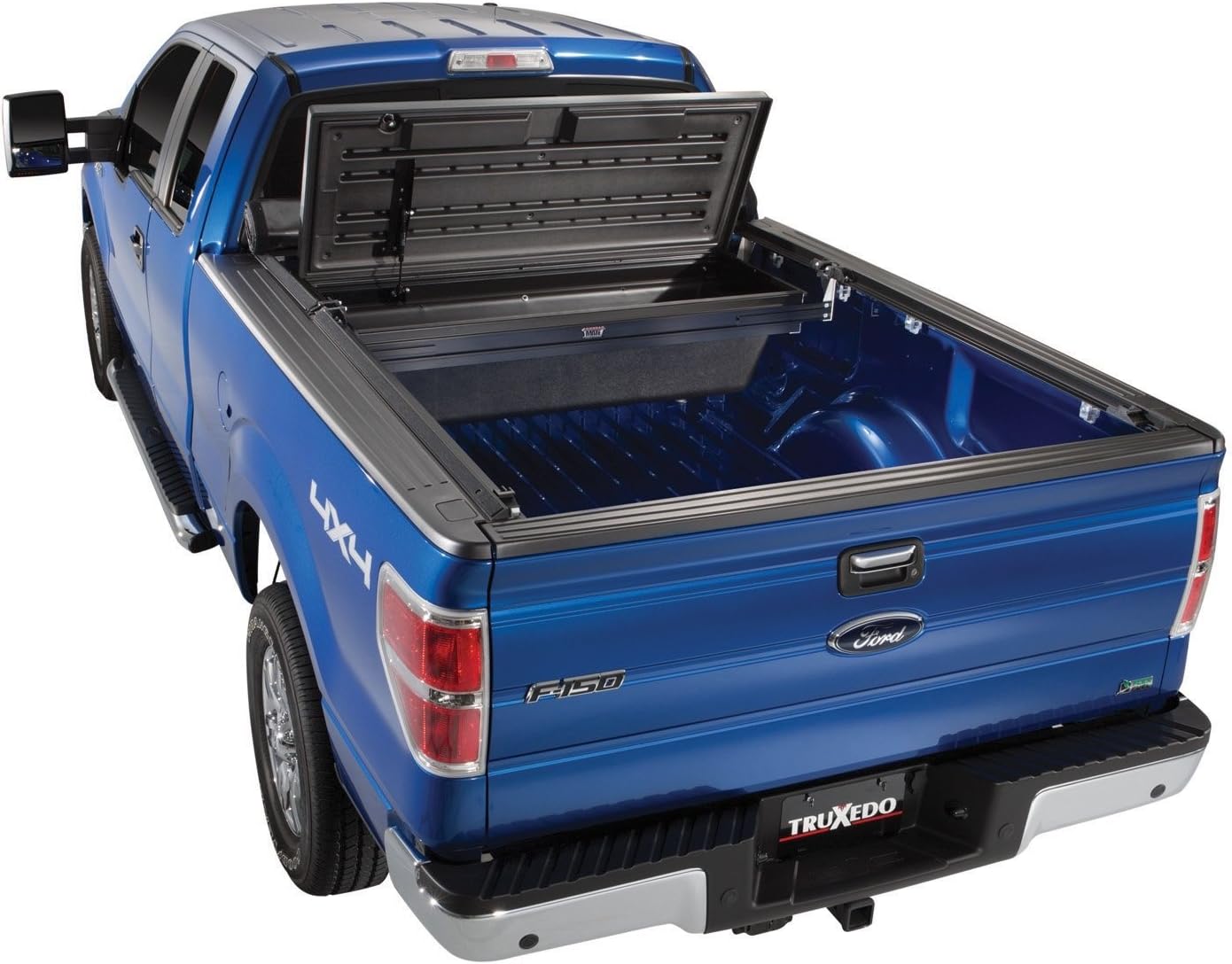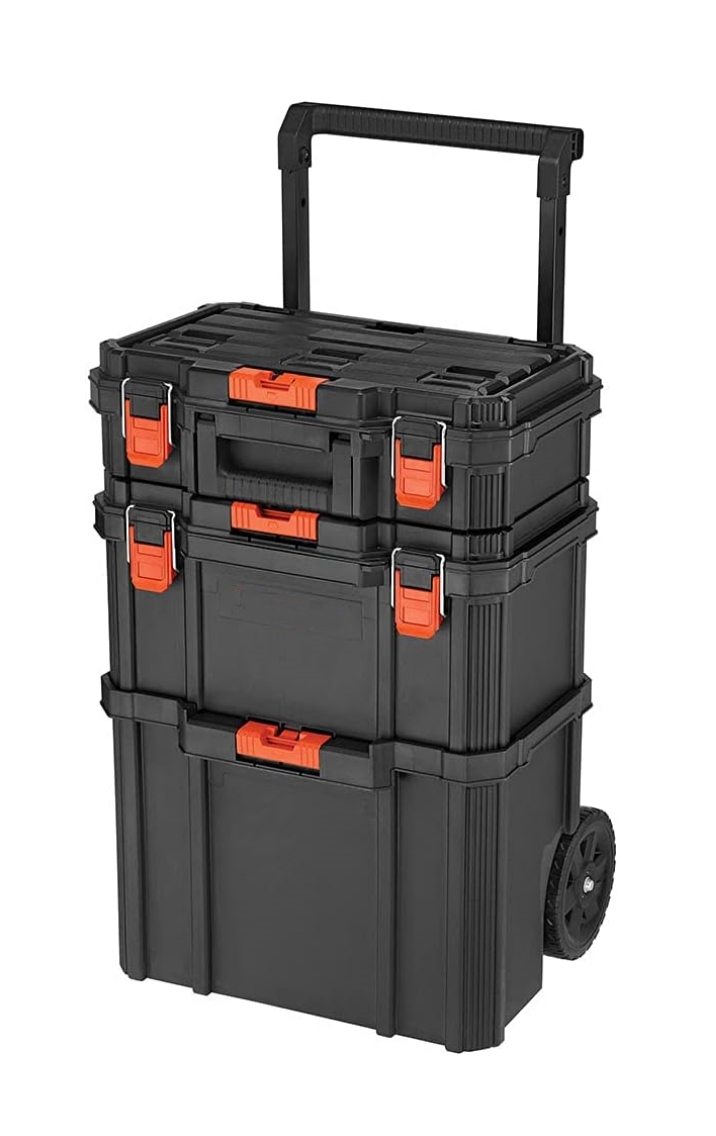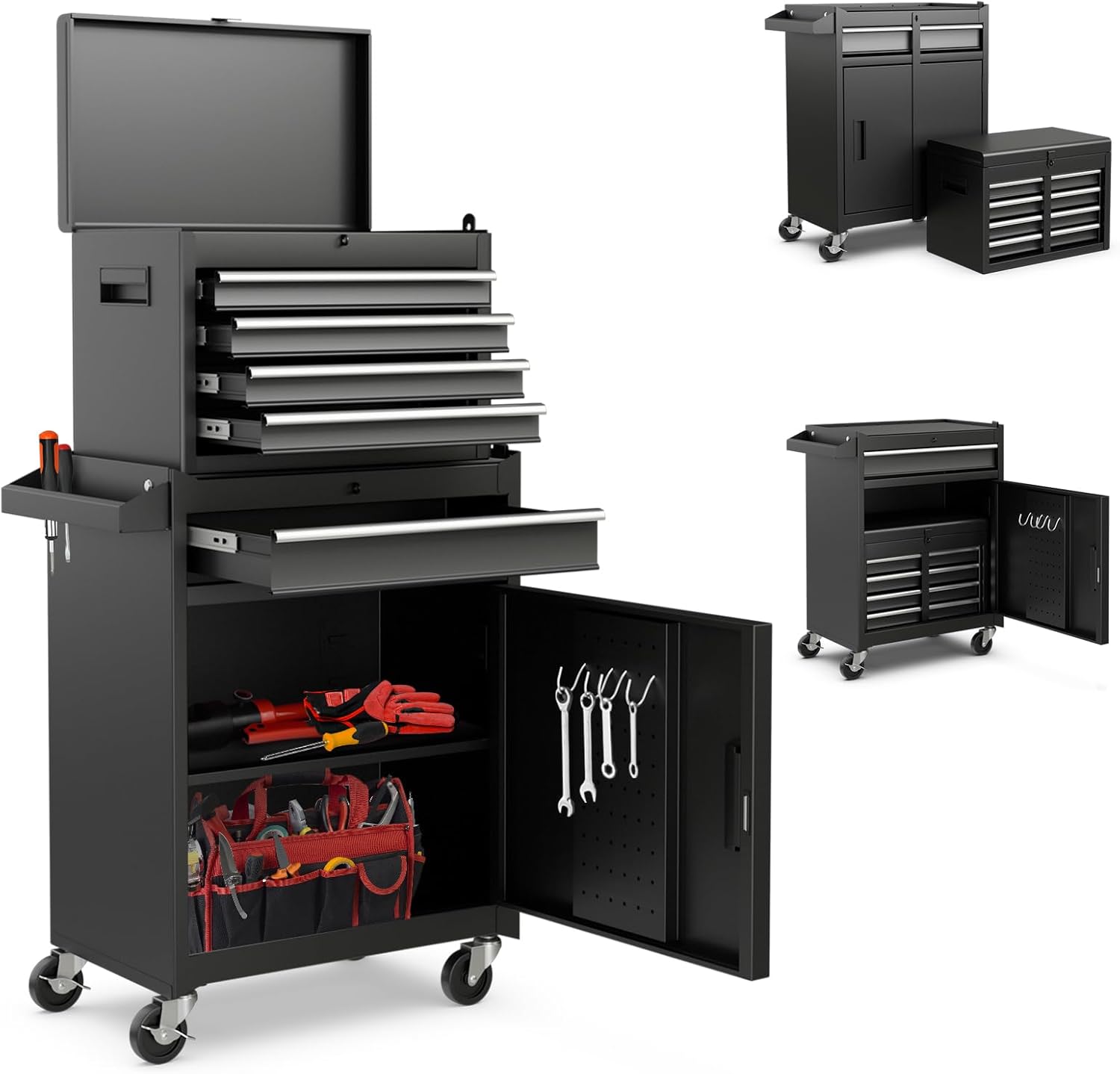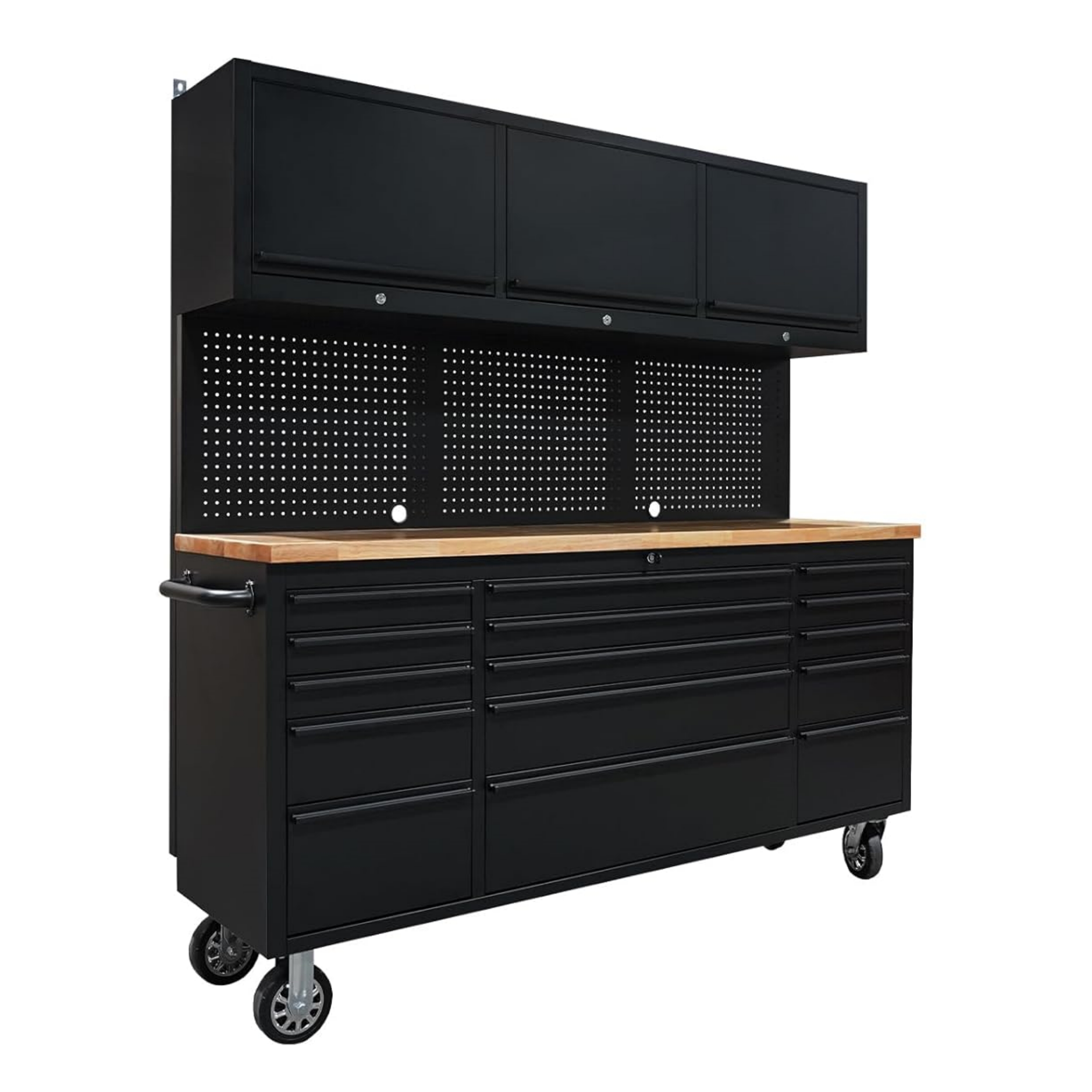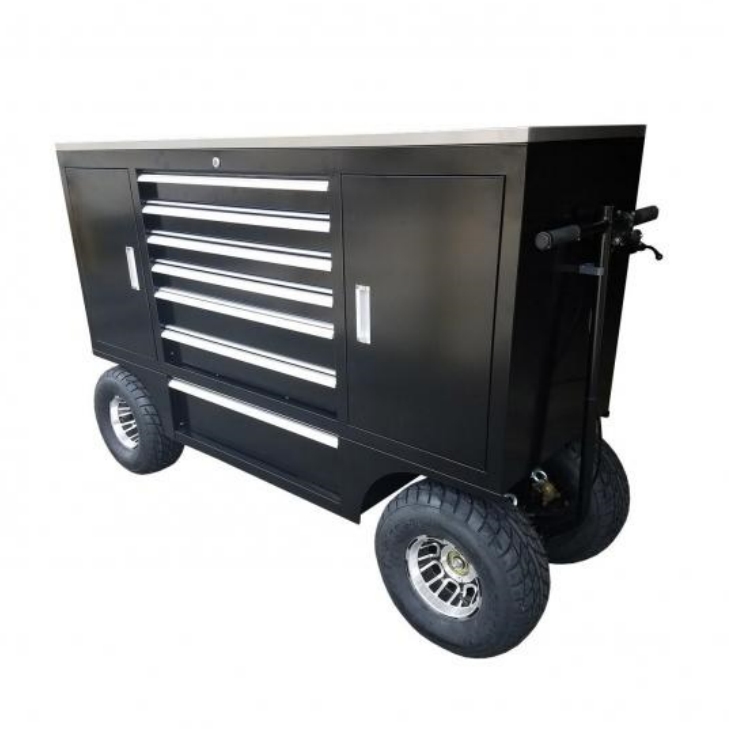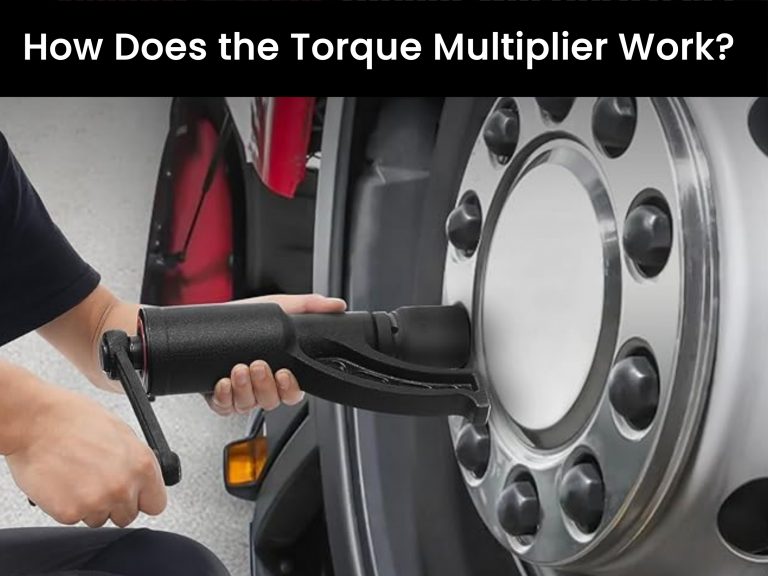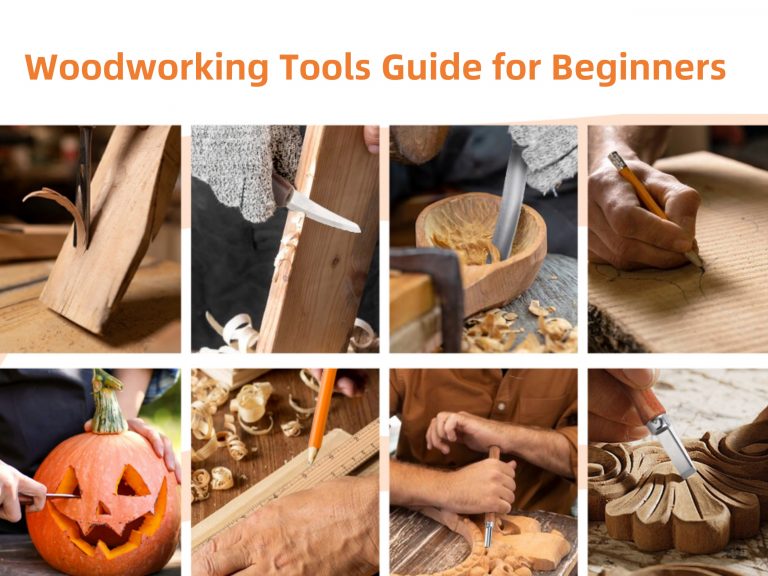A toolbox is an essential item for anyone who works with tools, whether it’s for professional use or DIY projects at home. With so many different types of toolboxes available, it can be overwhelming to choose the right one for your specific needs. From truck toolboxes to modular tool cabinets, each type offers unique features and benefits. In this comprehensive guide, we will explore the various types of toolboxes and provide valuable insights on how to choose the best one for your requirements.
Types of Toolboxes
1.Portable Toolbox
The most familiar type of toolbox is the portable toolbox, also known as the hand-carry toolbox. They are usually made of canvas cloth, plastic or metal, with a handle on top and can be easily carried from one place to another. Its interior is typically equipped with trays and card slots for easy sorting and storage tools.
2.Truck Toolbox
Truck toolboxes are specifically designed to be mounted on the bed of a truck, providing secure storage for tools and equipment. These toolboxes come in various sizes and configurations, including crossover, side mount, and chest style. They are typically made from durable materials such as aluminum or steel to withstand the rigors of transportation and outdoor exposure.
3.Modular Toolbox
Modular toolboxes are versatile storage solutions that allow users to customize and expand their storage capacity as needed. Each toolbox is composed of individual modular units that can stack, interlock, or be rearranged to create a unique storage system. They are ideal for users who require flexibility and scalability in their tool storage setup.
4.Tool Cabinet
Tool cabinets are large, stationary storage units that feature multiple drawers and compartments for organizing a wide range of tools. They are commonly used in workshops, garages, and industrial settings where a large number of tools need to be stored and accessed efficiently. Tool cabinets are available in various sizes and configurations, with options for locking mechanisms and mobility.
5.Tool Workbench
A versatile tool workbench combines a sturdy work surface with integrated storage for tools, making it a convenient all-in-one solution for workspaces. These workbenches often feature built-in drawers, shelves, and pegboards to keep tools organized and easily accessible during projects. They are popular among DIY enthusiasts and professionals who require a dedicated workspace for their tools and projects.
6.Pit Box
Pit boxes are specialized toolboxes commonly used in racing and automotive maintenance settings. These large, wheeled toolboxes are designed to be easily transported and provide ample storage for a wide range of tools, parts, and equipment. Pit boxes often feature heavy-duty construction, multiple drawers, and compartments for organizing tools in a high-performance environment.
How to Choose the Right Toolbox
When selecting a toolbox, it’s important to consider several factors to ensure that it meets your specific needs and preferences. Here are some key considerations to keep in mind when choosing the right toolbox:
1.Purpose and Application
Consider how you intend to use the toolbox. Are you a professional artisan, a DIY enthusiast, or a hobbyist? Determine the types of tools you need to store, the frequency of use, and the working environment where the toolbox will be utilized.
2.Storage Capacity and Organization
Evaluate the amount of tools and equipment you need to store and organize. Choose a toolbox with sufficient storage capacity and compartments to accommodate your tools while keeping them easily accessible and well-organized.
3.Durability and Construction
Look for a toolbox made from high-quality, durable materials that can withstand the demands of your work environment. Consider factors such as weather resistance, impact resistance, and overall sturdiness to ensure the longevity of the toolbox.
4.Mobility and Portability
If you require a toolbox that can be easily transported, consider options with built-in handles, wheels, or modular designs that allow for convenient mobility. For stationary storage, a heavy-duty tool cabinet or workbench may be more suitable.
5.Security and Protection
For valuable or sensitive tools, consider a toolbox with secure locking mechanisms to prevent unauthorized access. Additionally, look for features such as padded interiors or foam inserts to protect tools from damage during transportation.
6.Budget and Value
Set a budget for your toolbox purchase and compare options based on their features, quality, and overall value. Consider the long-term benefits and functionality of the toolbox in relation to its cost.
7.Customization and Expansion
If you anticipate the need for future expansion or customization of your tool storage, consider modular toolboxes that offer flexibility in adding or rearranging storage modules as your tool collection grows.
The End
In summary, the right toolbox can significantly impact the efficiency and organization of the work environment. By understanding the different types of toolboxes and considering key factors such as purpose, storage capacity, budget, etc., you can make an informed decision when choosing the best toolbox for your specific needs.
Hope this article was helpful to you. We will continue to update the practical articles of hardware tools. MYWAY TOOLS is always by your side.


